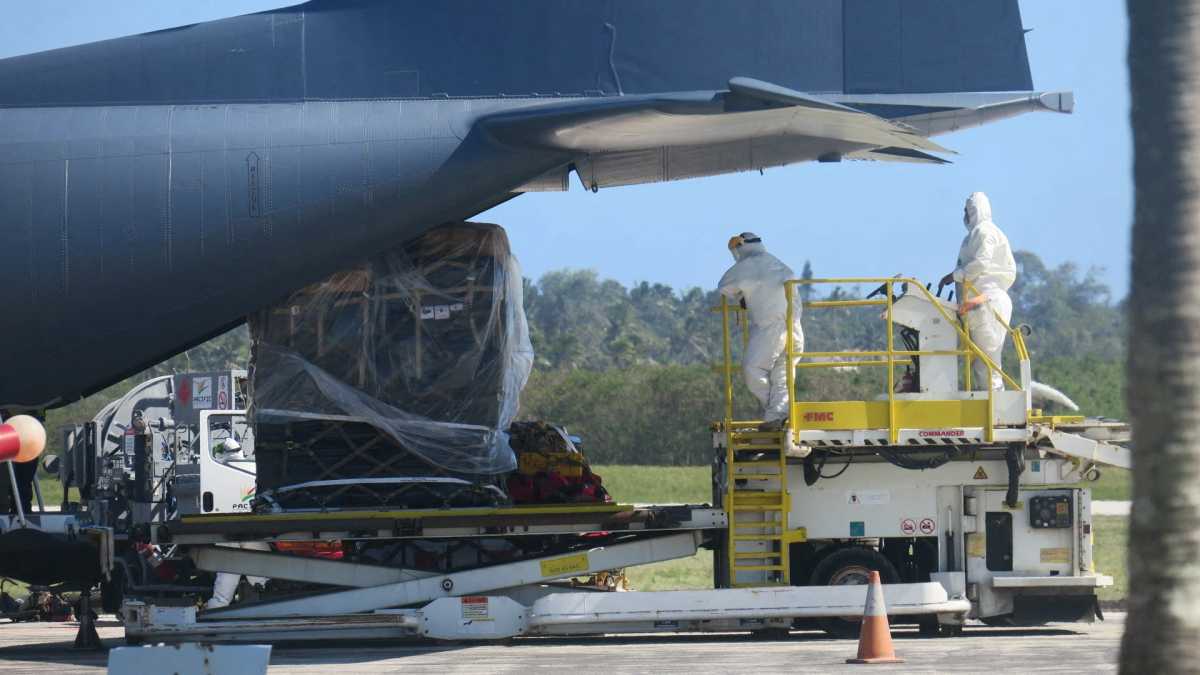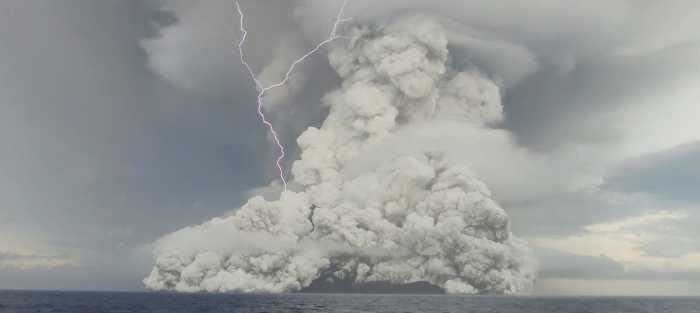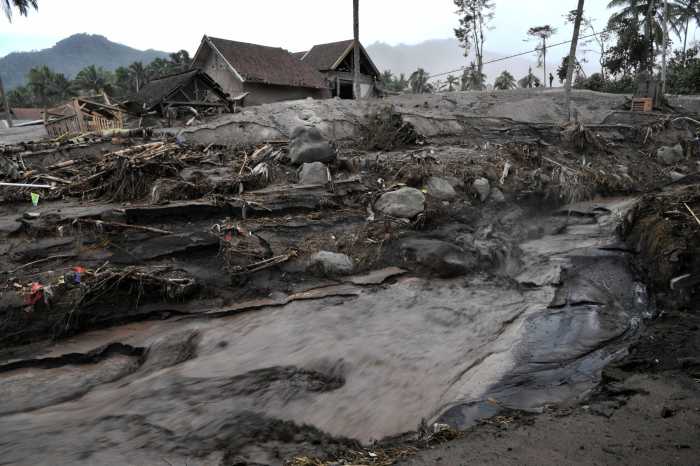By Praveen Menon and Kirsty Needham
The first aid flights reached Tonga on Thursday with more en route, five days after a devastating volcanic eruption and tsunami, as communities awaited a ship with equipment to scale up supplies of much-needed drinking water.
A Royal New Zealand Air Force C-130 Hercules carrying disaster relief supplies landed at the South Pacific island nation’s Fua’amotu International Airport, a defense spokesperson said, after volcanic ash was cleared off the runway.
Ash has blanketed the archipelago and spoiled much of its drinking water.
An Australian Globemaster C-17A military transporter also landed, carrying desalination equipment, shelter and kitchens, Australian Defense Minister Peter Dutton said. He praised the “tireless efforts of Tongan authorities” to clear away ash deposited by the Hunga Tonga-Hunga Ha’apai.
It erupted with a deafening explosion on Saturday, triggering tsunamis that destroyed villages, resorts and many buildings and knocked out communications for the nation of about 105,000 people.
The tsunamis killed at least three people, authorities said.
Accounts of miraculous escapes also emerged, including that of a 57-year-old being hailed as a “real life Aquaman” after recounting how he had to swim for about 27 hours after being swept away.
“I just floated, bashed around by the big waves that kept coming,” Lisala Folau, who lived on the small, isolated island of Atata, told Tongan radio station Broadcom Broadcasting.
Rachael Moore, Australia’s high commissioner to Tonga, said the loss of property had been “catastrophic,” that parts of the shoreline resembled a “moonscape” and that drinking water was “an extremely high priority.”
One New Zealand navy ship arrived on Thursday and a second, carrying 250,000 liters of water and desalination equipment able to produce 70,000 liters a day, was due on Friday, its High Commission said.
Speaking to Reuters from the capital Nuku’alofa, journalist Marian Kupu said Tongans were cleaning up all the dust from the volcanic eruption but feared they may run out of drinking water.
“Each home has their own tanks of water supply but most of them are filled with dust so it’s not safe,” Kupu said.
Telephone links between Tonga and the outside world were reconnected late on Wednesday, though restoring full internet services is likely to take a month or more, according to the owner of the archipelago’s sole sub-sea communications cable.
Tongans abroad were frantically calling families back home to ensure they were safe.
“It was very relieving to hear from them,” said Fatafehi Fakafanua, the speaker of Tonga’s legislative assembly, who was in New Zealand when the disaster struck, after making contact with his family.
The government had advised them to drink bottled water and wear masks outside because of the ash.
“There’s a fine layer of, a blanket of ash, everywhere and I hear that the public are generally out on the streets trying to clean it up,” Fakafanua added. “So there’s a real communal effort… It’s going to be a long, long, long road to recovery.”
In a radio address, Tonga King Tupou VI urged courage and hard work for the rebuilding process.
The king also received a message of condolence on Thursday from a fellow monarch, Britain’s Queen Elizabeth, who said she was “shocked and saddened” by the devastation.
“It must be incredibly difficult for those who are unable to contact friends and family while communications are disrupted, and I hope that they will soon be restored,” Elizabeth said.
The United Nations said that about 84,000 people – more than 80% of the population – has been badly affected by the disaster with safe water “the biggest life‑saving issue.”




























